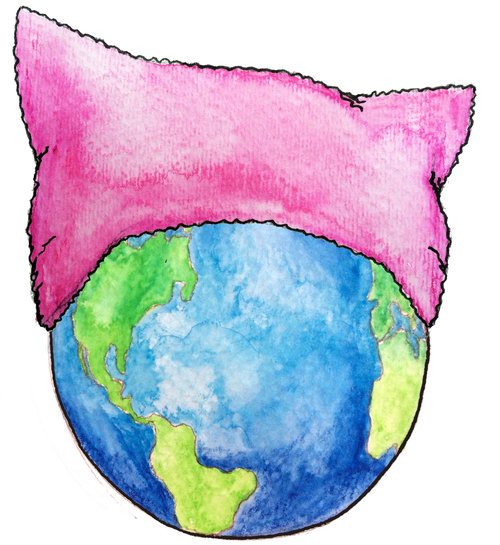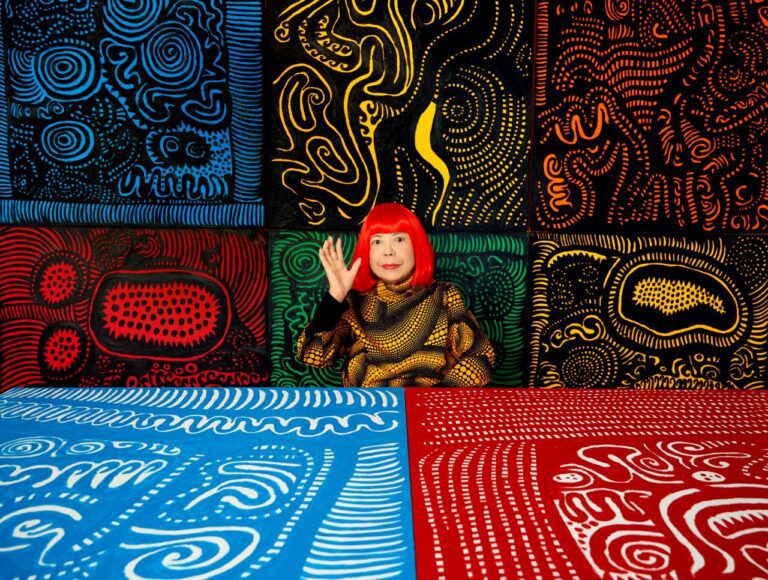Tal Fitzpatrick is a ‘craftivist’. Through the humble act of stitching she produces powerful messages of protest. Craftivism (craft + activism) is a form of gentle protest that gained international visibility when more than 3.2 million people took to the streets of Washington wearing pink-knitted feline hats to protest Trump’s inauguration. The hats were part of the Pussyhat Project, and the Women’s March on Washington became the largest single-day protest in US history.
Trump’s rise was also the catalyst for an Instagram message Fitzpatrick received from fellow craftivist Stephanie Dunlap of Arizona. Dunlap had a bold idea to raise awareness of how the Universal Declaration of Human Rights (UDHR) is being violated every day around the world.
The UDHR consists of 30 articles outlining an individual’s rights including civil, political, economic, social and cultural. Dunlap had been brewing the idea of embroidering each of the articles for a while, and with the travel ban on people from six Muslim-majority countries following Trump’s inauguration, it was time to act.
“Stephanie asked if I wanted to collaborate,” says Fitzpatrick, “and I felt it was a powerful project, and we should have other artists contribute, too.”
The initial idea was to have 30 artists embroider a quilt block responding to each of the 30 articles, which would be stitched together to form one large quilted wall hanging. Within one week of a social media call out, 120 artists were ready to stitch. “Instead of turning people away, in the spirit of craftivism, which is about community building, we decided that we would just make four quilts instead,” says Fitzpatrick.
The artists included first-time embroiderers, hobbyists and trained professionals from more than 22 countries representing 41 nationalities. They ranged in age from 19-62 years and created an online community by sharing and discussing their quilt blocks using #UDHRquilt on social media.
“The artists weren’t just embroidering the article,” says Fitzpatrick. “They were using their block to talk about human rights violations as a contemporary issue. The quilt isn’t just addressing the Human Rights Declaration, but the different ways it’s being violated and how important it is to keep aspiring to what the document sets out for humanity.”
The artists were encouraged to represent the articles in their own language and to shed light on a current human rights issue or celebrate the achievements of those who fought for equality around the globe. Embroidered interpretations ranged from blackbirding in Australia (see below), to the exploitation of factory workers, the current crisis in Venezuela, the same-sex marriage debate, the refugee crisis and countless other injustices against humanity.
The journey the artists have taken social media followers on has been significant. “I think craftivism is effective because at the very base level it helps people express their political opinion,” explains Fitzpatrick, “and that’s really important to do in a democracy, but for some reason we still have this social norm that says you don’t talk politics at the dinner table.” Fitzpatrick and Dunlap plan on telling the stories of each of the quilt blocks and artists involved through the publication of a four-part book. A look through the #UDHRquilt feed alone is evidence it will be an important narrative. And funds raised through the sale of the book will be donated to The UN Refugee Agency (UNHCR).
Fitzpatrick’s passion for craftivism is contagious and she hopes to inspire others to start their own gentle protest. As she takes a break from her PhD studies on this very topic to chat about the project, she has sage advice for those feeling the urge to stand up for injustice. “Connect with the community online, learn about other kinds of craftivism projects and have a go,” she says. “You can do something small and local with a few friends or you can do really substantial, huge projects.”







